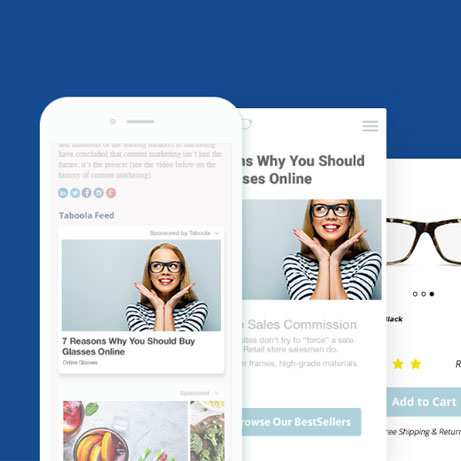Content & Location: Does it Matter Where Your Target Audience Lives?

When is the last time you went to a doctor and he asked you for all your addresses for the last 10 years? Never? Why not? After all, the keys to diagnosis are lifestyle, diet, and the environment the patient is in. Your environment is where you live, right? The same is true for marketing personas: you need to know what they do (lifestyle), why they do it (motivation) and where they are so you can meet them there.
"Customers will go where they will go," says one marketer when referring to Facebook Instant Articles. "It is our job to meet them there." Place is more than just which social media site they use, or which links refer them to your site. Your customers go where they live.
This may sound like a basic concept, but it is amazing how often it is ignored by content strategists. As user engagement metrics become more important for rankings, taking advantage of this gap will give you an edge over the competition.
Here are five reasons why where your target audience is located matters and why you should be using this data to craft compelling content.
Language
This goes beyond whether your target audience has English as their primary language, although for websites that appeal to an international audience this can indeed be a factor. In this case, your URL matters too. Your domain name should reflect the country you are targeting, and so you may have to acquire all of the international extensions for your website: UK, EU, JP, and others, or you could use subdomains instead.
The location piece is even more subtle. People from different parts of the United States use different idioms, language, and tone. Some areas of the country tend to be more formal, while in others, a casual tone in content is acceptable.
If you have a wide audience from various parts of the country, writing posts that appeal to all of them is a critical part of your content strategy. This is a part of personalizing their web journey down the marketing funnel. It starts with the tone and language of your content, and that initial top of the funnel content should be tailored for where they live.
Values
A look at any political or demographic map will tell you that not every state, city, county or country is the same politically, and generally speaking the people who live in those states share certain values and political opinions.
This is not to say that everyone in that location falls into a certain demographic category, but this is why the adage that discussing religion and politics is typically taboo on most blog and business sites unless the political decision or topic has a direct impact on you and your audience.
However, certain values also translate to buying behaviors, and those values cannot be ignored when creating content. Overall opinions of your target persona concerning debt, their income level, and understanding how to communicate the value of the services or products you provide will help you be more successful.
Think of it this way: if you are going to sell patio heaters to homeowners in Phoenix, Arizona, you are going to have to help them overcome their pain points: why would they need or want outdoor heaters? What are the benefits? What is the cost vs. reward?
These may sound like obvious things to ask, but they are tied to a location. It would be much easier to overcome those same pain points when selling the same heaters to consumers in Maine, especially as fall rolls around and temperatures drop.
This is a simple illustration of values: homeowners in Maine would value patio heaters and their benefits more than homeowners in Arizona, and your sales pitch to each would be quite different. Your content must follow the same formulas.
Recreation
What do your customers do for fun, and where do they do it? These answers will be much different depending on where they live. A person who trains for triathlons living in New York City will train much differently than someone who lives in Colorado and trains for the same type of events.
A snow skier who lives in the Rocky Mountain states will purchase much different equipment than one who lives in Vermont: both enjoy the same sport, but the snow conditions and equipment they need will vary greatly. The Rocky Mountain skier will need something that can handle powder as well as groomed trails, while a skier in Vermont will more than likely ski on hard pack most of the time.
Therefore, your content must not only appeal to those who engage in certain sports and activities but must also speak to how they do those things and where. Location is again an essential part of reaching your audience accurately. A skier from Utah who reads about skis designed for icy conditions and groomed trails might rapidly bounce from a skiing site that only talked about those, and the opposite might be true of the skier from Vermont.
Having content that appeals to every kind of customer will broaden your reach. This means creating more content and personalizing a customer journey from the top of the funnel to purchase.
Lifestyle
Beyond recreation is the lifestyle your target audience enjoys. Are they sedentary? Active? Does this activity level vary seasonally?
Using again the example of Maine and Arizona, you may find that Arizona residents stay inside during the hottest part of the year while the residents in Maine stay inside during the coldest months of the year. So, if you are selling something related to indoor activities your seasons for sales in those states will be opposite.
Your content message will be opposite as well. "Fun Ways to Beat the Heat" will work better in Arizona than in Maine, and "10 Indoor Activities to Beat the Winter Blues" will resonate with Maine residents where it is not only cold in the winter, but there are shorter periods of sunlight. This means those who deal with Seasonal Affect Disorders (SAD) are much more likely to be in Maine than they are in the southern United States.
Southern California may not relate to any of those things, but residents there may relate to doing things on weekdays to avoid tourist crowds or other similar posts. The content you create will depend on your target persona. Again, if your product or service is to reach all of these different users, you must tailor some content to reach all of them or risk alienating one or more audiences.
Night Life
While this may seem to follow the same vein as lifestyle and even recreation, the night life of a city or region can greatly affect what kind of content will resonate best with your target audience.
For instance, a fashion blog that talks about the best looks for Broadway or even off-Broadway shows may play well in New York and some larger cities large enough to draw plays and musicals. In smaller towns though, this type of fashion may never be applicable, and content will need to speak to what those customers do with their spare time.
How do you speak to these audiences with your content? You need to follow a few simple steps.
- Create as much content as you can that speaks to each geographic area.
- Personalize your website based on user location. Use Google data or your own consumer data to determine what areas you are reaching effectively and what areas you may want to reach with a new pillar of content.
- Revise your marketing persona or add personas often. Your initial expectations of who your customer will be may not be accurate. Use social listening and analytics to refine your content strategy.
- Use location information to inform your persona in the areas of language, values, recreation, lifestyle, and nightlife.
As Google changes algorithms, web users’ taste in content changes, and the internet continues to evolve, so must your content strategy. Luckily, we have a lot of data to inform our models and personas, and location is a significant part of that data. Using it shows you are listening to your customers and will ensure that your website visitors have a better experience, turning them from browsers into lifelong customers.










